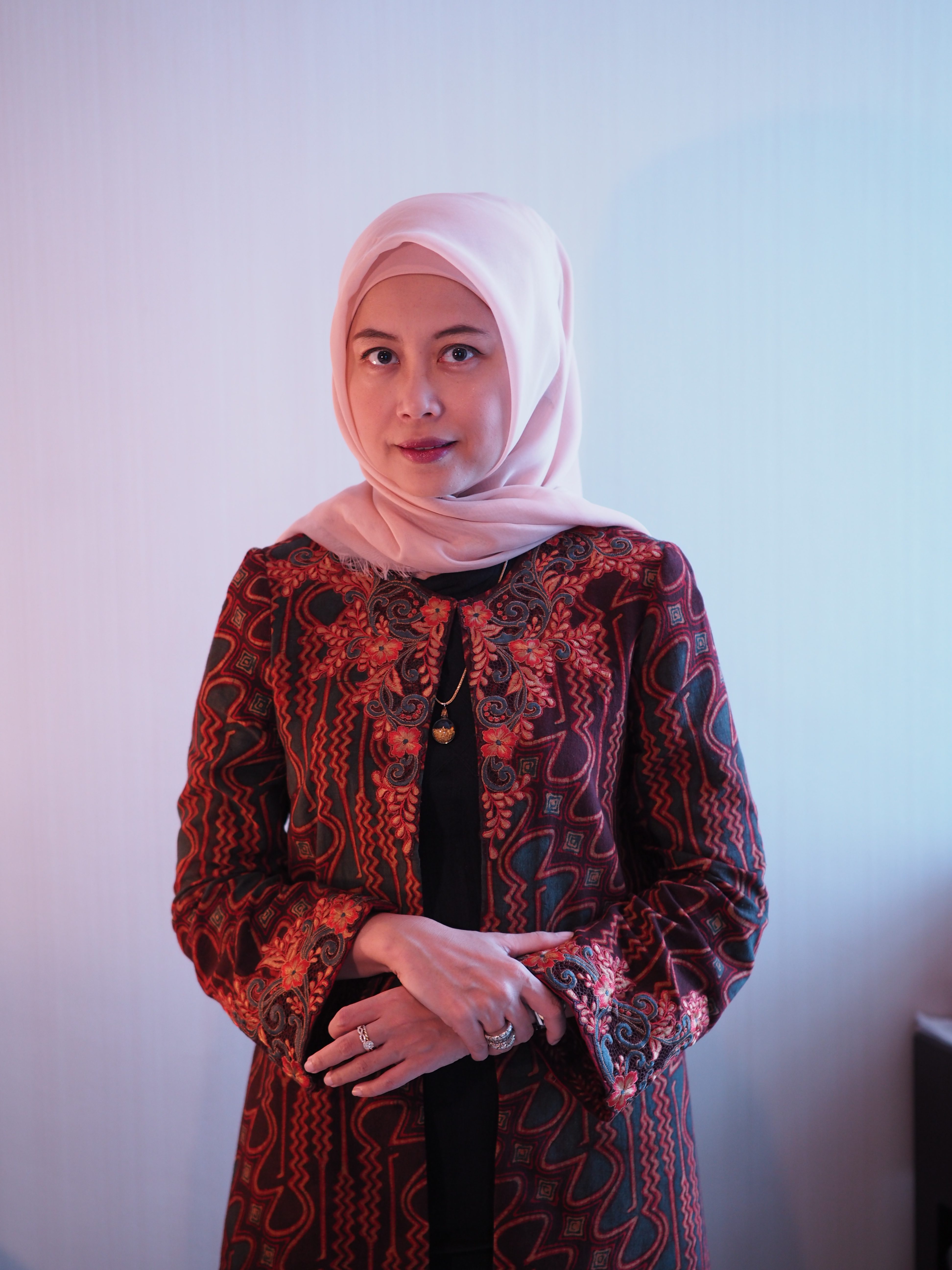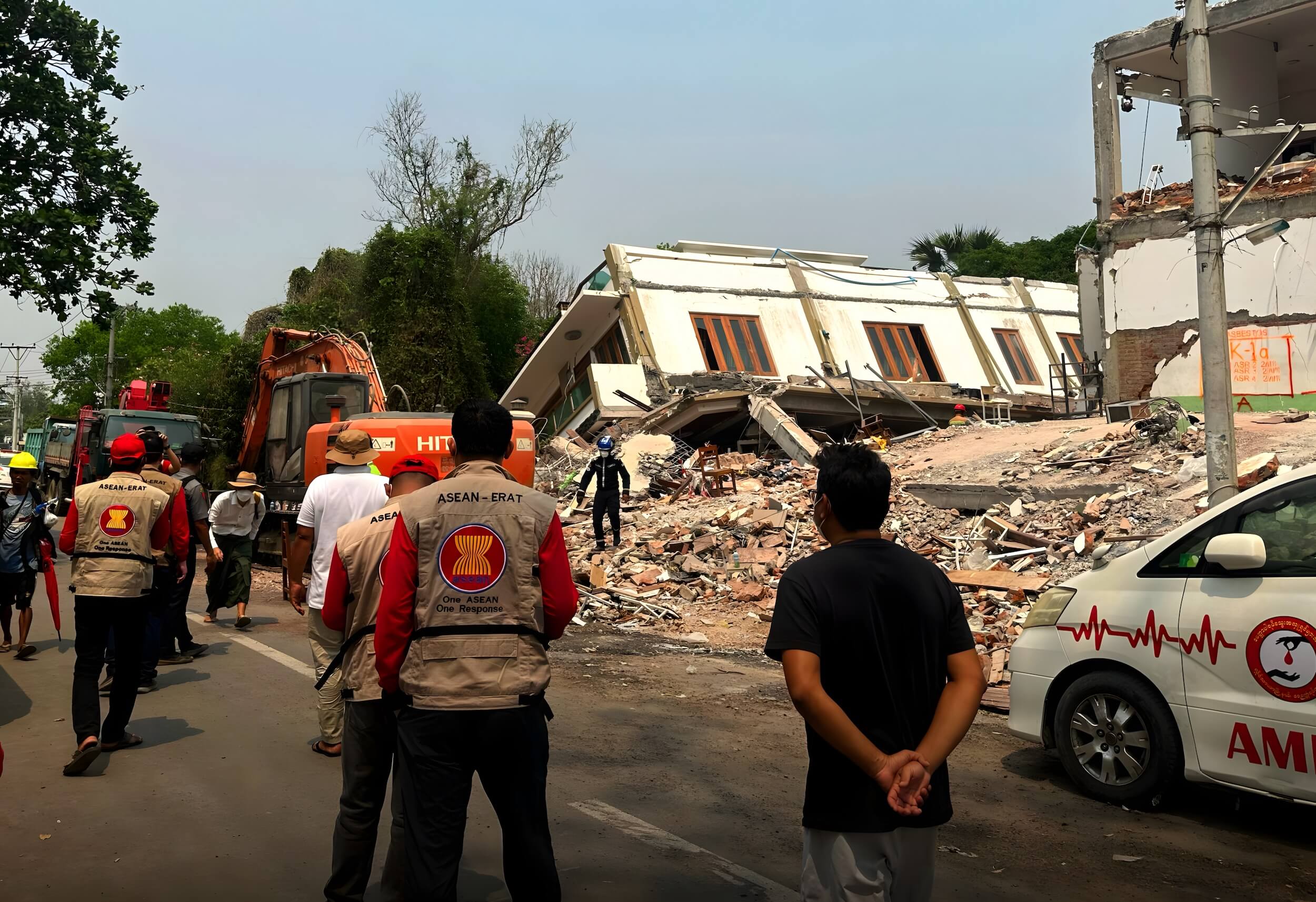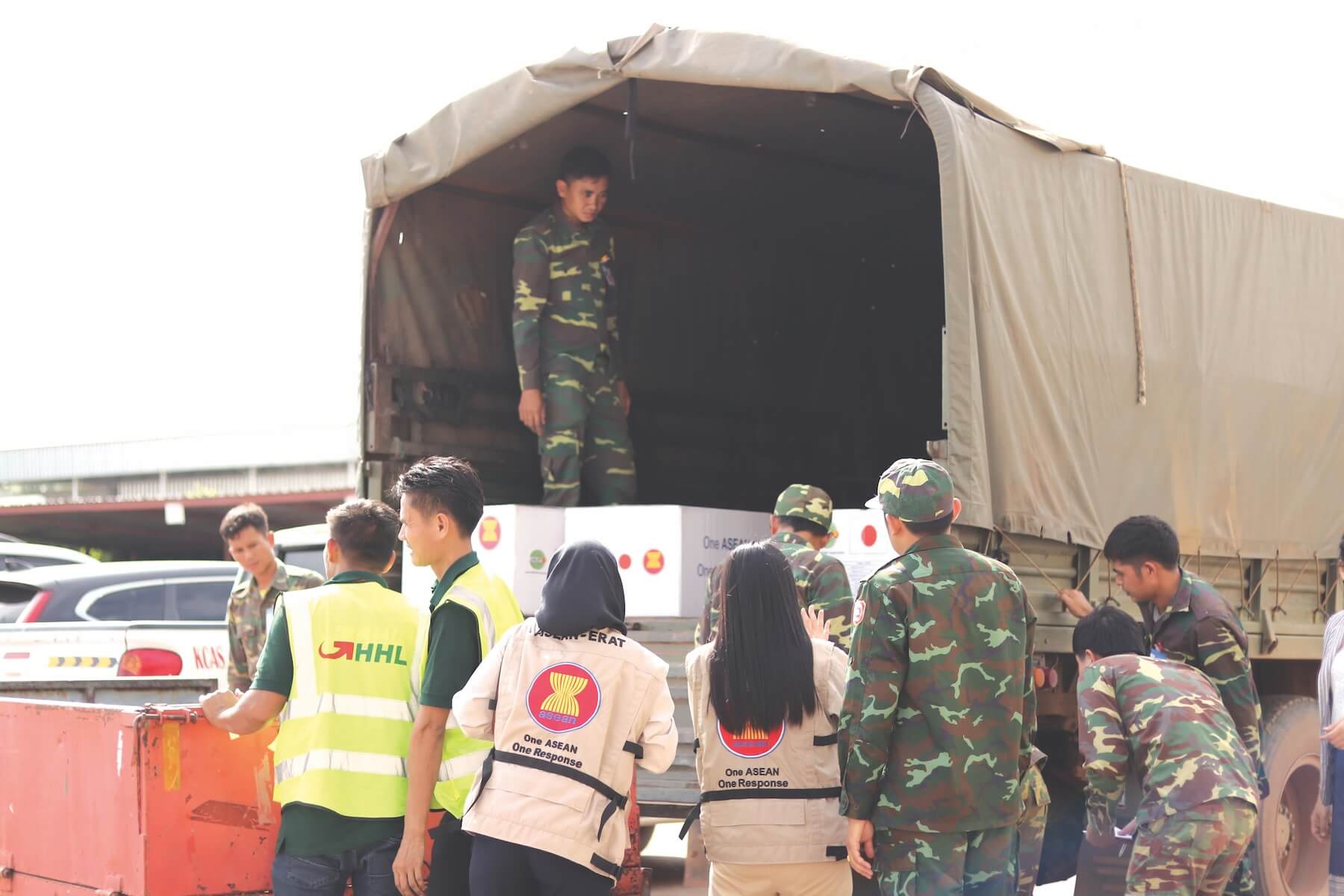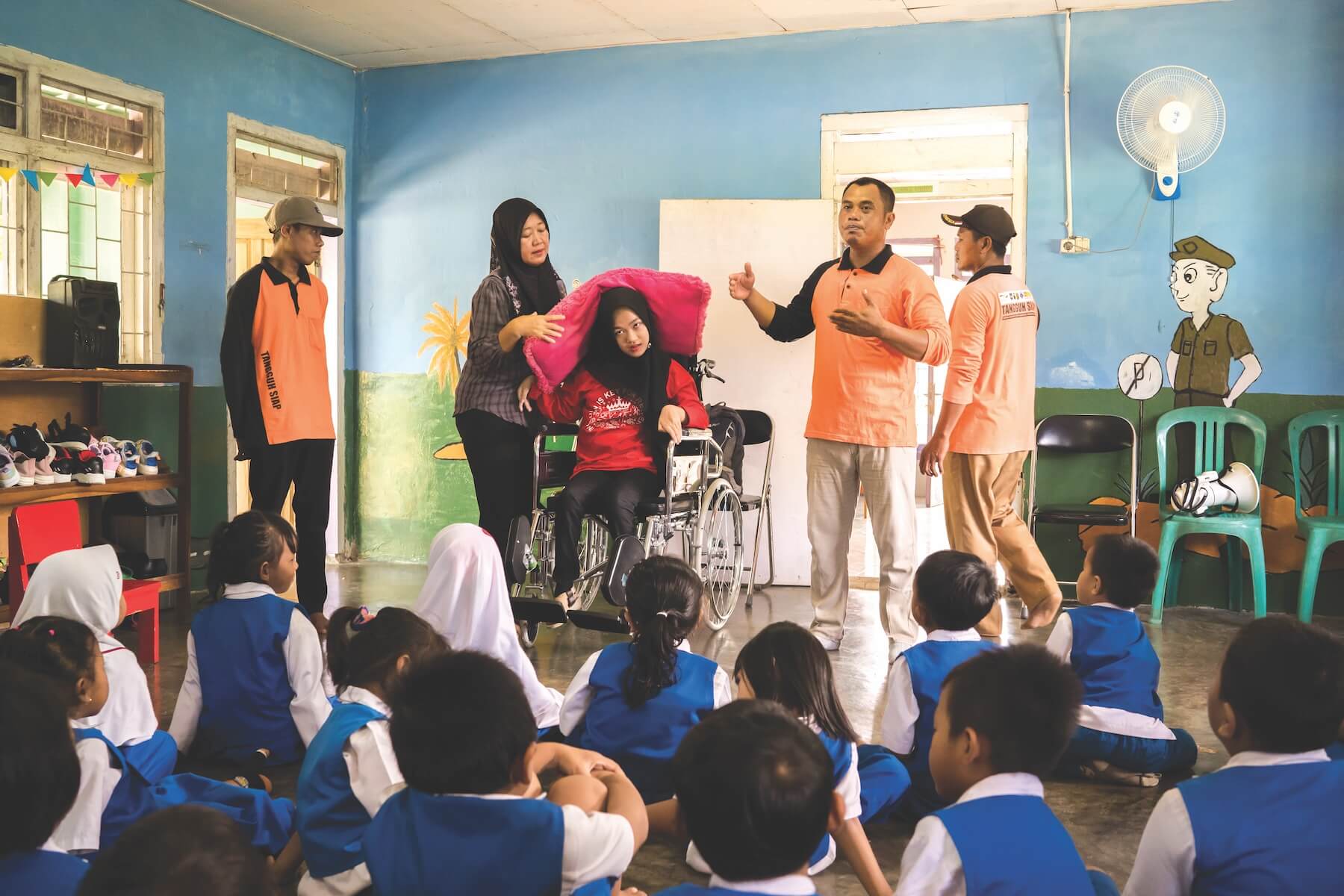




“One ASEAN, One Response” is far from just a tagline. It is a well thought out concept born out of a necessity to connect the real disaster experience from ground zero to the highest level of the diplomatic arena in ASEAN. It was borne from ASEAN’s experience in its response to the 2013 Super Typhoon Haiyan, one of the most powerful tropical cyclones known to mankind that killed more than 6,000 people in the Philippines.
Typhoon Haiyan’s devastating impact urged ASEAN to rethink, reorganise and recharge its regional response and prompted the ASEAN Leaders to sign and issue the ASEAN Declaration on One ASEAN, One Response: ASEAN Responding to Disasters as One in the Region and Outside the Region.
A regional response’s true essence embodies a sense of togetherness, a united approach, and concerted action by the organisation to help one or a few. In ASEAN, it is about the 10 countries coming together to support their members whenever calamities strike them. While a collective response reflects solidarity, the speed and scale of the actions constitute the essential bedrock of “One ASEAN, One Response.”
What does it take to make a regional response work? Coordination is the foundation of a collective response. In ASEAN, there needs to be established features for regional coordination to drive an effective collective response. The first is a functional organisation that is in charge of the coordination. Through the Declaration on One ASEAN, One Response backed by two agreements ratified by all the ASEAN Member States, the ASEAN Leaders appointed the ASEAN Coordinating Centre for Humanitarian Assistance on disaster management (AHA Centre) as the primary regional coordinating agency for disaster management and emergency response. The ASEAN Standard Operating Procedure for Regional Standby Arrangements and Coordination of Joint Disaster Relief and Emergency Response Operations (SASOP) provides guidelines on the dynamics and synergy of all parties in joint disaster and relief operations.
The availability of a plan that synchronises all parties’ direction is another essential component of a collective response. The ASEAN Joint Disaster Response Plan is developed before a disaster strikes and made known to all parties involved. This plan provides predictability and a basis for the regional response.
The state-of-the-art ASEAN Emergency Operations Centre at the AHA Centre serves as the regional nerve centre during a collective disaster response. It provides another crucial element to disaster and humanitarian operations—a common operating picture of an ongoing disaster to ensure that all parties are equally informed and able to effectively conduct regional collaborative planning and decision making. The AHA Centre produces and provides data, information and updates on ongoing and past disasters. It has also conducted innumerable coordination meetings to support and facilitate regional decision- making processes and actions.
The final feature of an effective regional collective response is the joint operation capability on the ground, where real action and tangible impact take place. The Joint Operations and Coordination Centre of ASEAN (JOCCA), functions as a coordinating hub and the home for ASEAN’s response on the ground. The joint operation capability is mostly supported by ASEAN’s homegrown response team, the ASEAN Emergency Response and Assessment Team (ERAT), and the Disaster Emergency Logistics System for ASEAN (DELSA), which is backed by a network of three warehouses in the region.
Initially, the AHA Centre’s contribution to an emergency response was often measured by the speed at which AHA Centre’s personnel and ASEAN-ERAT teams were deployed on the ground and the value of relief items they distributed to affected populations. The Central Sulawesi response in Indonesia marked the first time the AHA Centre was designated by the affected country to support the coordination of incoming international assistance, highlighting its role as the primary regional coordinating agency. This sets a precedent for AHA Centre’s function in other regional disaster response operations in the future.
The Central Sulawesi response also provided an important lesson that while the AHA Centre has evolved and progressed significantly as the primary coordinating agency, it has not fully accessed all required resources and capacities available in the region. ASEAN’s collective response should go beyond mobilising existing resources managed by the AHA Centre, such as DELSA regional stockpiles and the ASEAN-ERAT. Partnership with non-traditional humanitarian partners, such as the private sector, should also be intensified.
While there has been much progress in ASEAN’s disaster response and humanitarian assistance, the regional response for slow- onset disaster has not been tested. The existing mechanisms for preparedness and collective response have been designed, tested and improved for rapid-onset disasters that arrive with no or little warning, such as earthquakes and tsunamis, and those that arrive with a few days’ warning, such as floods and storms.
A slow-onset hazard develops over long periods, often neglected until late in its development, with no instant destruction to infrastructure and immediate displacement. Drought is often referred to as the classic example of a slow-onset disaster. It continues to be underestimated due to its unnoticeable development and often indirect consequences. The challenges and complexities in monitoring drought have magnified its threat since its effects are cascading, wide-ranging, recurrent, and can last for several months and even years. The main challenge with monitoring drought is that drought triggers and thresholds are not as defined as other hazards. For the past eight years, the total number of droughts recorded in the AHA Centre Disaster Information Network database is 46 events, affecting 7.6 million people and representing two per cent of all disasters recorded out of around 2,100 total disasters in the region affecting 67 million people.
A slow-onset disaster is an anticipated event, so there is an opportunity to develop and build anticipatory responses to it. Anticipatory actions can be planned and launched even before disasters happen. The One ASEAN, One Response can be further enhanced towards building a better and safer ASEAN Community. Collective anticipatory and early action can reduce, even prevent losses in lives and property from disasters of all kinds.








